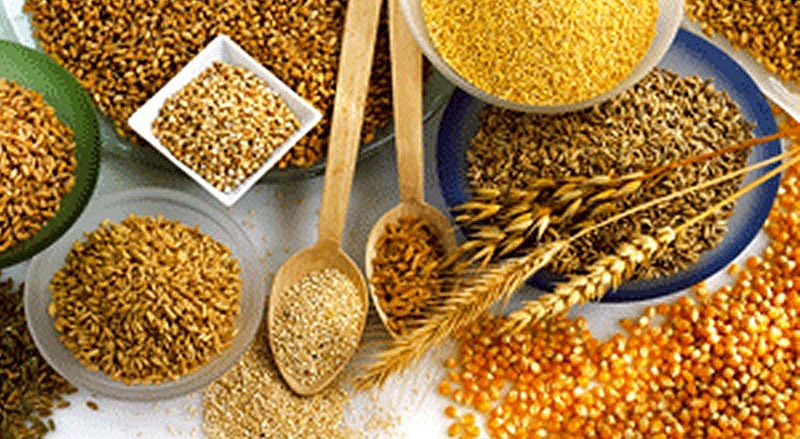~~~~~~~~~~~~~~~~~~~~~~~~~~~~~~~~~~~~~~
VIDEO:
Gluten allergy in coeliac disease may be provoked by a virus
Infection with a common, symptomless virus could be one of the first steps towards developing coeliac disease, a painful autoimmune condition that damages the gut.
 Coeliac disease involves the immune system treating gluten as an antigen and attacking it and has generally been thought to be a genetic disease.
Coeliac disease involves the immune system treating gluten as an antigen and attacking it and has generally been thought to be a genetic disease.
However, there is some evidence that the onset of the condition may be linked to people experiencing viral infections. These may include infection by adenoviruses, which cause colds, rotaviruses, which can cause diarrhoea, and the hepatitis C virus.
Now there is experimental evidence that some viruses may indeed prompt the onset of coeliac disease.
Continue reading

This article and video appeared on NEW SCIENTIST
RELATED:
In addition to cereals and pasta, here are other items containing gluten:
READ MORE
https://celiac.org/live-gluten-free/glutenfreediet/sources-of-gluten/
Bana Jabri at the University of Chicago, Illinois, and her team have found that exposing mice to a common reovirus called T1L breaks their tolerance of gluten.
When the team fed small groups of mice gliadin – a component of gluten – they found that mice produced two to three times as many antibodies against the compound over the next two days if they were also infected with reovirus.
“The reovirus changes the way the immune system sees gluten,” says Jabri. Normally, the body’s immune system learns to tolerate the wide range of substances in our food, including gluten – a protein found in wheat, rye and barley. But the team’s findings suggest that infection with a reovirus interferes with this, leading the body to mistakenly attack gluten.
“Our experiments are the first to demonstrate that a virus can induce loss of tolerance to dietary antigens,” says Jabri.

Indigestible gluten
“Instead of mounting a tolerant, non-aggressive response, the immune system in the presence of the reovirus views gluten as being dangerous, promoting a destructive inflammatory response,” says Jabri.
The researchers also found that mice infected with the T1L virus had between two to four times as much of an inflammatory molecule in their bodies. This molecule, called interferon regulatory factor 1, has been found at abnormally high levels in the gut linings of children with coeliac disease, and has also been implicated in instigating the condition’s onset.
Compared with other common foodstuffs, gluten is particularly likely to trigger immunological problems because it is unusually resistant to being broken down in the gut, says Jabri. Gliadin is the most difficult component of gluten to digest.
The team’s findings could explain why only a small proportion of people develop coeliac disease, which is a far more severe condition that gluten intolerances.
While 40 per cent of people in the US seem to have a genetic predisposition to coeliac disease, only 3 per cent of the population – around 3 million people – have the condition. This could be because the others haven’t been exposed to a viral trigger.
“This is a fascinating study,” says David Sanders, at the University of Sheffield, UK. “Investigators have studied this ‘second-hit’ hypothesis for some time, to explain why not everyone with genetic predisposition actually develops the disease. Now the new study suggests that reoviruses might play a role.”
If studies in people confirm that reovirus can trigger coeliac disease, it could lead to new treatments, says Sanders. Jabri’s team are now working on a vaccine that might stop infections from causing coeliac disease.
Journal reference: Science, DOI: 10.1126/science.aah5298
This article and video appeared on NEW SCIENTIST
RELATED:
Sources of gluten - Celiac.org
In addition to cereals and pasta, here are other items containing gluten:
- Lipstick, lip gloss, and lip balm because they are unintentionally ingested
- Communion wafers
- Herbal or nutritional supplements
- Drugs and over-the-counter medications (Learn about Gluten in Medication)
- Vitamins and supplements (Learn about Vitamins and Supplements)
- Play-dough: children may touch their mouths or eat after handling wheat-based play-dough. For a safer alternative, make homemade play-dough with gluten-free flour.
READ MORE
https://celiac.org/live-gluten-free/glutenfreediet/sources-of-gluten/

No comments:
Post a Comment
Thank you for visiting my blog. Your comments are always appreciated, but please do not include links.